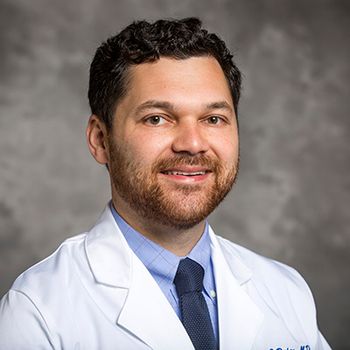
- ONCOLOGY Vol 13 No 7
- Volume 13
- Issue 7
Epirubicin, Cisplatin, Oral UFT, and Calcium Folinate in Advanced Gastric Carcinoma
UFT (uracil and tegafur in a 4:1 molar ratio) plus calcium folinate treatment has favorable activity and tolerable toxicity in patients with advanced gastric carcinoma. High response rates have been reported in patients with
ABSTRACT: UFT (uracil and tegafur in a 4:1 molar ratio) plus calcium folinate treatment has favorable activity and tolerable toxicity in patients with advanced gastric carcinoma. High response rates have been reported in patients with advanced gastric carcinoma receiving a schedule of epirubicin, cisplatin (Platinol), and protracted infusion of 5-fluorouracil (5-FU). Replacing the inconvenient infusion pump and intravenous catheter needed for protracted infusion of 5-FU, we administered oral UFT plus calcium folinate (Orzel) to 37 patients (median age, 55 years; median World Health Organization [WHO] performance status of 1) with locally advanced or metastatic gastric carcinoma. Epirubicin 50 mg/m² and cisplatin 60 mg/m² were administered by intravenous injection on day 1; UFT 360 mg/m²/day po was administered in conjunction with oral calcium folinate 25 mg/m²/day in divided daily doses for 21 days, followed by a 7-day rest period. Courses were repeated every 4 weeks. Among 37 evaluable patients who received a median of four courses of treatment (range, 2 to 10), two achieved a complete response and 18 a partial response, for an overall response rate of 54% (95% confidence interval, 39% to 70%). Stable disease was reported in 12 patients (32.4%) and disease progression in another five (13.5%). The median duration of survival was 10 months (range, 2 to 15+). The main toxicities were nausea/vomiting, leukopenia, diarrhea, and oral mucositis. WHO grade 3 or 4 toxicity included leukopenia in 14 patients (37.8%), nausea/vomiting in 11 (29.7%), oral mucositis in five (13.5%), and diarrhea in four (10.8%). Epirubicin, cisplatin, and oral UFT plus calcium folinate, a convenient outpatient regimen, has significant activity and tolerable toxicities in patients with gastric carcinoma. [ONCOLOGY 7(Suppl 3):64-68, 1999]
Although the incidence of gastric carcinoma has decreased in most Western countries,[1] it is still an important cause of cancer mortality and its treatment remains a challenge. Because the majority of patients have metastatic disease either at presentation or later, the development of systemic chemotherapeutic treatments is mandatory to improve clinical outcome for patients with gastric carcinoma. Given the predominantly palliative intent of advanced gastric carcinoma therapies, regimens with both low toxicity and acceptable activity should be chosen for patients in this category.[2]
During the past decade, the development of new regimens that may represent a step forward in the treatment of advanced gastric carcinoma encouraged the medical community. Until recently, the most extensively used combination was FAM (5-fluorouracil [5-FU], Adriamycin [doxorubicin], mitomycin-C [Mutamycin]), which produced objective response rates of 30% to 35%, median remission of 6 to 9 months, and median survival of 7 months.[3] However, the FAM regimen failed to improve median survival when compared with single-agent 5-FU.[4] Moreover, in two randomized studies, FAM was found to be inferior to FAMTX (5-FU, Adriamycin [doxorubicin], methotrexate) and to PELF (Platinol [cisplatin], epirubicin, leucovorin [calcium folinate], 5-FU).[5,6]
The ECF (epirubicin, cisplatin, 5-FU) regimen was developed in the gastrointestinal unit of the Royal Marsden Hospital and first reported in 1990.[7] The choice of the three drugs in the regimen was based on their single-agent activity in upper gastrointestinal cancer[8-11] and the potential synergy between 5-FU and cisplatin shown in experimental models.[12] An anthracycline was included based on the anticipated enhanced cytotoxicity afforded by combining it with the other two drugs. Evidence for this potential increased efficacy is provided by the results of a randomized trial of advanced gastric carcinoma, in which the addition of epirubicin to a combination of bolus 5-FU and cisplatin resulted in a significant survival benefit compared with that for 5-FU and cisplatin alone.[13]
The regimen was also designed to minimize systemic toxicity; hence, epirubicin was chosen instead of doxorubicin because of its lower rates of mucositis and cardiac toxicity.[14] 5-Fluorouracil was administered by protracted venous infusion because this schedule has been shown to produce higher response rates and less myelotoxicity compared with bolus administration for patients with colorectal carcinoma.[15]
A potential drawback of the ECF regimen is the central venous line and the portable infusion pump; protracted infusion of 5-FU adds to morbidity and cost.[16] Long-term UFT (uracil and tegafur in a 4:1 molar ratio) offers the advantage of oral administration mimicking the effects of protracted 5-FU infusion.[17] In our previous report, an outpatient regimen of oral UFT plus calcium folinate (Orzel) provided favorable activity in gastric carcinoma patients, with tolerable toxicities.[18] We therefore designed a phase II trial of epirubicin, cisplatin, UFT, and calcium folinate, replacing 5-FU with oral UFT and calcium folinate.
Patients
Between April 1997 and June 1998, 37 patients seen at the Korea University Anam and Guro Hospital entered the study. All patients had locally unresectable or disseminated adenocarcinoma of the stomach confirmed by biopsy, with measurable or evaluable disease. Eligibility requirements included age younger than 75 years and a life expectancy of at least 4 weeks. Required prestudy laboratory parameters included a white blood cell count > 4.0 × 109/L, platelets > 100 × 109/L, and bilirubin and creatinine values of < 2.0 mg/dL. Patients who had received prior 5-FU or other chemotherapeutic agents were eligible for the trial. All patients provided informed consent.
Treatment
Epirubicin 50 mg/m² was given as a bolus intravenous injection every 4 weeks. Cisplatin 60 mg/m² was administered as a 4-hour intravenous infusion every 4 weeks with standard hydration. If on the day of treatment the white blood cell count was < 2.0 × 109/L or platelets were < 100 × 109/L, epirubicin and cisplatin were delayed for 1 week or until myelosuppression had resolved. A second treatment delay due to myelosuppression or an episode of World Health Organization (WHO) grade 4 myelosuppression required a 25% dose reduction of epirubicin and cisplatin on subsequent treatments. If there were repeated episodes of grade 3 or 4 myelosuppression, in spite of dose modification, treatment was stopped.
Oral UFT and calcium folinate were administered for 21 consecutive days, followed by a 7-day treatment-free interval. The total daily UFT dose was divided into three doses administered orally every 8 hours, beginning with an initial dosage of 360 mg/m²/day. UFT was supplied in the form of 100-mg capsules (100 mg of tegafur plus 225 mg of uracil). Calcium folinate was supplied as 5-mg tablets and administered orally, with the total daily dose divided into four doses. If a patient had a body surface area of 1.7 m², the total daily calcium folinate dose was 40 mg (eight tablets). In subsequent courses, the daily dose of UFT was increased by 100 mg/day if toxicity was absent or mild at the 360-mg/m² dose level. The calcium folinate dosage, however, remained at 25 mg/m²/day. On the next course, the daily dose of UFT was reduced by 100 mg/day in patients with grade 3 or 4 nonhematologic toxicity, based on WHO criteria. Oral administration of UFT and calcium folinate was interrupted if the patient developed grade 3 or 4 nonhematologic toxicity that did not resolve with UFT dose reduction. Treatment was reinstituted after clinical symptoms resolved. Courses were repeated every 4 weeks until tumor progression or the development of treatment intolerance.
Evaluation
All patients were examined clinically prior to entry into the study. Baseline investigations included a complete blood cell count and estimation of serum electrolytes, urea, creatinine, calcium, phosphate, bilirubin, alkaline phosphatase, aspartate aminotransferase, total proteins and albumin, carcinoembryonic antigen, and a-fetoprotein. Upper gastrointestinal endoscopy, double-contrast upper gastrointestinal radiographs, abdominal computed tomography, and other appropriate procedures were also performed. Patients were evaluated weekly using routine blood tests at the outpatient clinic. Unless disease progressed unequivocally or the patient had dropped out of the study because of drug toxicity, disease status was reevaluated radiologically every two cycles. Standard WHO response criteria were used to assess response to treatment.[19] Toxicity was also reported using WHO criteria. Response duration was calculated from the date that the response was confirmed to the date that progressive disease was first observed. Survival duration was calculated from the first day of treatment to death or the last follow-up.
Patient Characteristics
A total of 37 consecutive patients were entered in this trial. Patient characteristics are listed in Table 1. Of these patients, 23 (62%) had WHO performance status grade 0 or 1; seven patients were evaluated as grade 3. The median patient age was 55 years, with a range of 34 to 74 years. Four patients had been treated previously with 5-FUcontaining chemotherapy (two had received paclitaxel [Taxol], 5-FU, cisplatin [Platinol]; the other two had received postoperative adjuvant 5-FU, cytosine arabinoside, cisplatin). Of the 37 patients, 32 had metastatic disease at the start of treatment and five had locally advanced unresectable disease.
Response to Chemotherapy
The 37 enrolled patients received 171 courses of treatment; the median number of courses per patient was four, with a range of two to 12 (Table 2). Overall, at least 95% or more of all drugs were administered per cycle (epirubicin and cisplatin, 97.5%; UFT, 95%), with 16 patients (43%) requiring dose modification during treatment.
With 20 of 37 evaluable patients responding, the overall objective response rate was 54% (95% confidence interval, 39% to 70%), including two (5.4%) complete remissions. Of 27 patients with measurable disease, 17 (63%) responded to treatment, and of 10 patients with evaluable disease, another three (30%) responded. Two patients who had relapsed lung metastasis after curative surgical resection achieved complete remissions, with response durations of 11+ and 8+ months. One patient who had failed to respond to a regimen of paclitaxel, 5-FU, cisplatin achieved a partial response and had disease progression after 3 months. Other patients who had received previous chemotherapy did not respond to this therapy. One complete responder had been treated with six cycles of 5-FU, cytosine arabinoside, cisplatin chemotherapy as adjuvant therapy 3 years before the disease relapse.
Responses were frequently observed in the patients with metastases of liver (7/13, 53.8%) or lymph nodes (6/10, 60%), or in the patients with localized unresectable disease (3/5, 60%). However, patients with peritoneal disease did not respond, and three patients had stable disease as their best response during therapy. After a median follow-up of 8 months, the median survival time was 10 months (range, 2 to 15+ months) for 37 patients (Table 3).
Toxicity
The main toxicities encountered with epirubicin, cisplatin, oral UFT, and calcium folinate were leukopenia and nausea/vomiting (Table 4). WHO grades 3 and 4 leukopenia were observed in seven and seven patients, respectively. Six patients with grade 4 leukopenia required dose modification on subsequent courses. Treatment was discontinued in one patient because of prolonged myelosuppression after treatment with a reduced dosage of epirubicin and cisplatin. Grades 2 and 3 nausea/vomiting were observed in 43.3% and 29.7% of the patients, respectively. Significant nausea continued to affect 11 patients for more than 2 weeks and only resolved on cessation of UFT administration. The dosage of UFT was reduced in the subsequent course of treatment for those patients. Four patients experienced grade 3 diarrhea severe enough to require temporary cessation of treatment, and three of these patients were hospitalized. Grade 3 or greater stomatitis occurred in five patients. Alopecia was detected in all patients. No severe infection or treatment-related death occurred.
The results of this study indicate that epirubicin, cisplatin, oral UFT, and calcium folinate combination treatment has significant activity in patients with advanced gastric carcinoma. This treatment has a favorable pattern of toxicity and is feasible on an outpatient basis.
The clinical objective response rate in this study was 54%. Our response rate was inferior to that of ECF originally reported by Findlay et al,[20] but similar to that of the Italian Group for the Study of Digestive Tract Cancer (56%)[21] and that reported by Bamias et al;[22] furthermore, the 95% confidence interval for the overall response rate of those studies partially overlapped with ours. Sixty-five percent (15/23) of patients with WHO performance status 0 or 1 had an objective response to this combination. Also, the response rate in the group of patients with measurable disease, good performance status, and no prior chemotherapy was 72% (13/18), which is comparable to that of Findlay et al.
There are several possible explanations for the enhanced activity of the epirubicin, cisplatin, UFT, and calcium folinate regimen. Protracted venous infusion of 5-FU has demonstrated a greater tumor response rate and reduced toxicity, but no survival benefit in colorectal cancer.[15] This is likely because of the relatively high dose intensity and the ability to maintain constant plasma levels of 5-FU, which is a cell-cyclespecific drug with a short half-life (approximately 15 minutes).[23,24] Oral UFT generates plasma 5-FU levels similar to those with protracted venous infusion of 5-FU.[25] Also, a potential drawback of protracted venous infusion of 5-FU is the central venous line and the portable infusion pump, which may add morbidity and cost. In our regimen, protracted venous infusion of 5-FU was replaced by the safer oral UFT plus calcium folinate, which has proven clinical activity in advanced gastric carcinoma patients.[18] Preclinical studies have suggested that 5-FU and cisplatin may be synergistic because of cisplatin-induced depletion of intercellular methionine, which results in enhanced binding of fluorodeoxyuridine monophosphate to thymidylate synthase.[26] Anthracyclines are known to be active in gastric carcinoma, and epirubicin was incorporated into the regimen because it is less likely to cause mucositis than doxorubicin[27] and less likely to enhance 5-FUrelated mucositis.
The median survival of our evaluable patients was 10 months. This result is better than the survival observed among untreated patients with metastatic or unresectable gastric carcinoma, where the reported median survival ranges from 2 to 4 months.[28,29] Furthermore, side effects of this regimen were tolerable and controllable. Because of the 1-day infusion schedule, this regimen can be administered on an outpatient basis without disrupting daily life. With the oral regimen, treatment can be temporally discontinued if toxicity such as diarrhea, mucositis, nausea, or vomiting worsens. However, this regimen is associated with more severe nausea/vomiting episodes than occurred in our previous study with only oral UFT plus calcium folinate. This phenomenon can be explained by the addition of cisplatin and epirubicin. Eleven patients required dose reduction of UFT during the treatment. Another significant toxicity was myelosuppression, which developed in a cumulative pattern. Six patients experienced grade 4 leukopenia (after 7, 6, 5, 3, 2, or 1 cycles of treatment).
Considering these facts, the epirubicin, cisplatin, oral UFT, calcium folinate regimen seems to be a reasonable alternative to other highly myelosuppressive and toxic chemotherapy regimens for treating gastric carcinoma. This regimen may provide an option as adjuvant chemotherapy because of its convenient administration, high activity, and manageable toxicity. Also, the ability of this regimen to downstage tumors (60% response rate in locally advanced unresectable disease) may enable the resection of previously unresectable disease.
A regimen of epirubicin, cisplatin, oral UFT, and calcium folinate provides an effective form of palliative treatment for patients with advanced gastric carcinoma. Further study in a large patient population is warranted to determine the usefulness of this regimen in a group of patients with locally advanced unresectable disease in neoadjuvant settings.
References:
1. Boring CC, Squires TS, Tong T: Cancer statistics, 1994. CA Cancer J Clin 44:7-26, 1994.
2. Wilke H, Preusser P, Fink U, et al: New developments in the treatment of gastric carcinoma. Semin Oncol 17(suppl 2):61-70, 1990.
3. Findlay M, Cunningham D: Chemotherapy of carcinoma of the stomach. Cancer Treat Rev 19:29-44, 1993.
4. Cullinan SA, Moertel CG, Fleming TR, et al: A comparison of three chemotherapeutic regimens in the treatment of advanced pancreatic and gastric carcinoma. JAMA 253:2061-2067, 1985.
5. Wils JA, Klein HO, Wagener DJ, et al: Sequential high-dose methotrexate and fluorouracil combined with doxorubicin: A step ahead in the treatment of advanced gastric cancer. A trial of the European Organization for Research and Treatment of Cancer Gastrointestinal Tract Cooperative Study. J Clin Oncol 9:827-831, 1991.
6. Cocconi G, Bella M, Zironi S, et al: Fluorouracil, doxorubicin, and mitomycin combination versus PELF chemotherapy in advanced gastric cancer: A prospective randomized trial of the Italian Oncology Group for Clinical Research. J Clin Oncol 12:2687-2693, 1994.
7. Cunningham D, Cahn A, Menzies-Gow N, et al: Epirubicin, cisplatin and 5-fluorouracil (ECF) is highly effective in advanced gastric cancer (abstract). Proc Am Soc Clin Oncol 9:123, 1990.
8. McDonald J: Gastric cancer: Chemotherapy of advanced disease. Hematol Oncol 10:37-42, 1992.
9. Machover D, Goldschmidt E, Chollet P, et al: Treatment of advanced colorectal and gastric adenocarcinomas with 5-fluorouracil and high dose folinic acid. J Clin Oncol 4:685-696, 1986.
10. Beer M, Cocconi G, Ceci G, et al: A phase II study of cisplatin in advanced gastric cancer. Eur J Cancer Clin Oncol 19:717-720, 1983.
11. Cerasimo RJ, Hong WK: Epirubicin: A review of the pharmacology and adverse effects of an Adriamycin analogue. J Clin Oncol 4:425-434, 1986.
12. Etienne MC, Bernard S, Fischel JL, et al: Dose reduction without loss of efficacy of 5-fluorouracil and cisplatin combined with folinic acid: In vitro studies on human head and neck carcinoma cell lines. Br J Cancer 63:372-377, 1991.
13. Kyoto Research Group for Chemotherapy of Gastric Cancer: Randomized, comparative study of combination chemotherapy in advanced gastric cancer: 5-Fluorouracil and cisplatin (FP) versus 5-fluorouracil, cisplatin and 4´-epirubicin (FPEPIR). Anticancer Res 12:1983-1988, 1992.
14. Cocconi G: Chemotherapy of advanced gastric carcinoma: To be completely rewritten? Ann Oncol 5:8-11, 1994.
15. Lokich JJ, Ahlgren JD, Gullo JJ, et al: A prospective randomized comparison of continuous infusion fluorouracil with a conventional bolus schedule in metastatic colorectal carcinoma: A Mid-Atlantic Oncology Program study. J Clin Oncol 7:425-432, 1989.
16. Webb A, Cunningham D, Scarffe JH, et al: Randomized trial comparing epirubicin, cisplatin, and fluorouracil versus fluorouracil, doxorubicin, and methotrexate in advanced esophagogastric cancer. J Clin Oncol 15:261-267, 1997.
17. Muggia FM, Jeffers S, Leichman CG, et al: Potential for uracil + Ftorafur (UFT) to mimic protracted infusions of 5-fluorouracil (FU) (abstract). Proc Am Soc Clin Oncol 11:135, 1992.
18. Kim YH, Shin SW, Kim BS, et al: Oral UFT and leucovorin in patients with advanced gastric carcinoma. Oncology 11(suppl 10):119-123, 1997.
19. Miller AB, Hoogstraten B, Staquest M, et al: Reporting results of cancer treatment. Cancer 47:207-214, 1981.
20. Findlay M, Cunningham D, Norman A, et al: A phase II study in advanced gastro-esophageal cancer using epirubicin and cisplatin in combination with continuous infusion 5-fluorouracil (ECF). Ann Oncol 5:609-616, 1994.
21. Zaniboni A, Barni S, Labianca R, et al: Epirubicin, cisplatin, and continuous infusion 5-fluorouracil is an active and safe regimen for patients with advanced gastric cancer: An Italian Group of the Study of Digestive Tract Cancer (GISCAD) Report. Cancer 76:1694-1699, 1995.
22. Bamias A, Hill ME, Cunningham D, et al: Epirubicin, cisplatin, and protracted venous infusion of 5-fluorouracil for esophagogastric adenocarcinoma: Response, toxicity, quality of life, and survival. Cancer 77:1978-1985, 1996.
23. Fraile RJ, Baker LH, Buroker TR, et al: Pharmacokinetics of 5-fluorouracil administered orally, by rapid intravenous and by slow infusion. Cancer Res 40:2223-2228, 1980.
24. Lokich J, Bothe A, Fine N, et al: Phase I study of protracted venous infusion of 5-fluorouracil. Cancer 48:2565-2568, 1981.
25. Ho DH, Pazdur R, Covington W, et al: Comparison of 5-fluorouracil pharmacokinetics in patients receiving continuous 5-fluorouracil infusion and oral uracil plus N1-(2´-tetrahydrofuryl)-5-fluorouracil. Clin Cancer Res 4:2085-2088, 1998.
26. Scanlon KJ, Newman EM, Lu Y, et al: Biochemical basis for cisplatin and 5-fluorouracil in human ovarian carcinoma cells. Proc Natl Acad Sci U S A 83:8923-8925, 1986.
27. Brambilla C, Rossi A, Bonfante V, et al: Phase II study of doxorubicin versus epirubicin in advanced breast cancer. Cancer Treat Res 70:261-266, 1986.
28. Moertel CG: The natural history of advanced gastric cancer. Surg Gynecol Obstet 126:1071-1074, 1968.
29. Bedikian AY, Chen TT, Khankhanian N, et al: The natural history of gastric cancer and prognostic factors influencing survival. J Clin Oncol 2:305-310, 1984.
Articles in this issue
over 26 years ago
Discussing Disease Progression and End-of-Life Decisionsover 26 years ago
New Genetic Mechanism Associated With Thyroid-Related Diseasesover 26 years ago
Beyond 5-Fluorouracilover 26 years ago
Nonsurgical Therapy Holds Promise for Basal Cell Carcinomaover 26 years ago
Photodynamic Therapy Effective for Swallowing Problemsover 26 years ago
Novel Gene Therapy to Clear Blood Clots in Leg ArteriesNewsletter
Stay up to date on recent advances in the multidisciplinary approach to cancer.
















































































